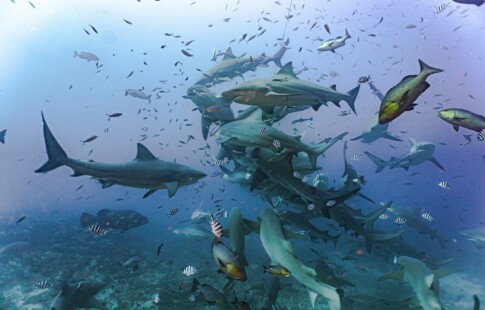
What Is the Endangered Species Act?
We are reader-supported. When you buy through links on our site, we may earn affiliate commission.
What do you think when you picture an endangered animal? Pandas might come to mind first. These gentle bears are arguably the most well-known endangered creatures. There are thousands more at risk — but fortunately, the Endangered Species Act aims to bring these animals back.
What is the Endangered Species Act (ESA)? Take a look.
Background and Definition
In 1973, the U.S. government passed the ESA with support from both parties. It involves several steps to preserve endangered animals and plants and their natural habitats. Here’s a quick glance at how individuals and organizations can use the law:
- People identify an animal or plant that needs to be protected.
- They send a petition highlighting why said species need to be classified as “threatened” or “endangered.”
- These requests have to endure both scientific and public consideration.
- Any species that passes will be granted various recovery protections and plans to ensure extinction doesn’t occur.
In other words, the ESA works with two government agencies, the U.S. Fish and Wildlife Service (FWS) and the U.S. National Oceanic and Atmospheric Administration (NOAA) Fisheries Service, to rescue and grow populations of endangered species.
How Does the Endangered Species Act Work?
There are a few tactics the ESA employs to protect endangered species across the globe.
First, the ESA requires all federal agencies to ensure their actions don’t impact these animals and plants directly. It’s also their responsibility to avoid damage to natural habitats. Second, the ESA prohibits any commerce related to endangered species. This restriction also means no one can “take” wildlife that ends up on the list.
It’s key to point out that other government groups incorporate the ESA into their policies. For example, the Office of Pesticide Programs (OPP) has to guard endangered species against pesticides’ damages. These associations work together to further these preservations.
These rules extend to animals and plants beyond the U.S. Wildlife around the world benefits from the ESA because the law prohibits species transport across American borders. This rule discourages traders from killing animals because they can’t earn money for them.
Populations are monitored over time. They remove species from the list when the animals and plants make a full recovery. It may take several years before the ESA can successfully say a species isn’t threatened or endangered anymore.
Species Protected by the Endangered Species Act
If you’re wondering which species the ESA currently protects, you can conduct a quick web search to find a comprehensive list of animals and plants. These species are often also categorized by the World Wildlife Fund (WWF) and the International Union for Conservation of Nature and Natural Resources (IUCN).
Here are several animals on the ESA list:
- California tiger salamander
- Tooth cave spider
- Hawaiian goose
- Puerto Rican parrot
- Green sea turtle
- American crocodile
713 different animal species exist on the ESA endangered and threatened list. There are nearly 1,000 plant species categorized by the law, too. It’s also possible to view which petitions the ESA has under review at any given moment. These numbers change every so often, as the ESA makes updates continuously.
What Is the Endangered Species Act Success Rate?
There’s no denying that the ESA has been successful. It’s widely regarded as one of the most impactful laws ever passed to protect endangered animals and plants. It turns out that the law has been 99% successful over nearly 50 years. In other words, the ESA has kept almost every listed species alive.
These animals include everything from bald eagles to humpback whales. Unfortunately, the Trump administration took a few steps to weaken how the law enforces various protections. It’s now easier for people and industries alike to get around the ESA’s rules and regulations.
Future Steps for Progress
It’s essential for the ESA to continue to move forward successfully. There are many animal and plant species that wouldn’t be around today without the ESA’s ordinances. If we want to keep these creatures and others from extinction, we need to support similar measures, too.
There’s much more that needs to be done outside of the ESA — because similar laws can only do so much to protect endangered species. It’s vital for additional action to be taken, like supporting indigenous communities, choosing renewable energy and reducing ocean pollution.
What is the Endangered Species Act? In a nutshell, the ESA has worked to protect various creatures around the world. It’ll continue to keep animals and plants from extinction with our collective support — and further action.
Share on
Like what you read? Join other Environment.co readers!
Get the latest updates on our planet by subscribing to the Environment.co newsletter!
About the author

Jane Marsh
Starting from an early age, Jane Marsh loved all animals and became a budding environmentalist. Now, Jane works as the Editor-in-Chief of Environment.co where she covers topics related to climate policy, renewable energy, the food industry, and more.





